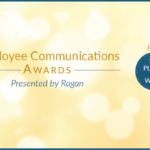Navigating the new global marketplace is more challenging than ever. Traditional companies, ranging from brick-and-mortar retail to the largest manufacturing companies, are feeling the squeeze. These companies are asking themselves, “What does it take to thrive in an economy that seems to change every day?”
To answer this question, established enterprises ought to take a page from the startup’s book. Where veteran companies often get bogged down by processes and hierarchies that cause stagnation, startups tend to prioritize the innovation, flexibility and collaboration that allow them to pivot with the market and their customers’ needs.
Capturing The Startup’s Culture Of Innovation
One of the benefits of startup culture is the sheer amount of innovation that occurs in every aspect of the company. There’s an attitude of creativity, thoughtful risk-taking and daring to think differently to find bold new solutions. Sure, innovation is a value that every company strives for, but established companies can struggle with the challenge of balancing innovation with the demands of customers and investors and the limitations of their product or service. This is the classic innovator’s dilemma, as scaling a company and balancing the needs of many constituents can often win out over innovation.
Innovation As A Core Company Value
One way of addressing this dilemma is through the adoption of innovation as a core company-wide value. To be successful, a precedent must be set at the very top that innovation and a growth mindset are integral parts of the company culture. Company leaders should provide a clear and inspiring vision of where the company is going and where the opportunities for innovation exist. Ultimately, you want to strive for innovation that is congruent with company-wide goals and values — not shots in the dark but, rather, thoughtful risk-taking.
A culture of innovation can be best achieved when there is a strong framework to reinforce it. This means aligning your rewards and recognition to promote innovation. However, there are also more direct and concrete ways of encouraging innovation. For example, there are many problems that never get solved at companies because they aren’t prioritized and continually fall through the cracks. To account for this, companies can create cross-functional teams that are tasked with solving one singular issue apart from the stress of day-to-day functional operations. This is one way to empower employees to come up with innovative solutions for some of the company’s more complex issues.
Collaboration That Powers Innovation
Another way to encourage innovation is by retaining the characteristics of a startup and not allowing corporate hierarchy to take over. While corporate hierarchies do fulfill an important function in providing basic organization to a large group of people, they can also disrupt the ease of communication between leaders and employees. Those at the top become more and more distanced from those lower in the hierarchical ranks, often leading to an echo chamber that influences decision making.
The Power Of Diversity And Good Customer Communication
Good, innovative ideas can come from anywhere, and a lack of diversity of thought is a surefire way to stifle innovation. Leaders can lean into the innovative ideas of those with different perspectives through authentic engagement with employees and forums to share their thoughts. These forums can look like town hall meetings, surveys and/or casual social interactions, whether in-person or virtual.
Leaning Into Your Customers’ Insight
Along those same lines, an often untapped source of inspiration and innovation can be a company’s own customers. Leaders who can ask thoughtful questions and take the time to really listen will be amazed by the variety of insights that customers can provide. Because of their unique perspectives and backgrounds, customers don’t just suggest innovative product ideas — they might also have great ideas about operations or even ways to collaborate across industries. Customer feedback can also be an excellent predictor of future market behavior, as you can begin to notice certain needs or trends that are consistent across customers and find innovative ways to meet those needs.
While startup culture has its flaws, there are also many lessons that leaders can learn from startups, particularly in the context of surviving — and thriving — in an ever-changing marketplace. The values of innovation, adaptability and effective communication are at a premium in today’s market. Leaders who can demonstrate these values and implement them on a company-wide level have a marked advantage over competitors which are relying on familiar ways of doing things to yield new and better results.
















